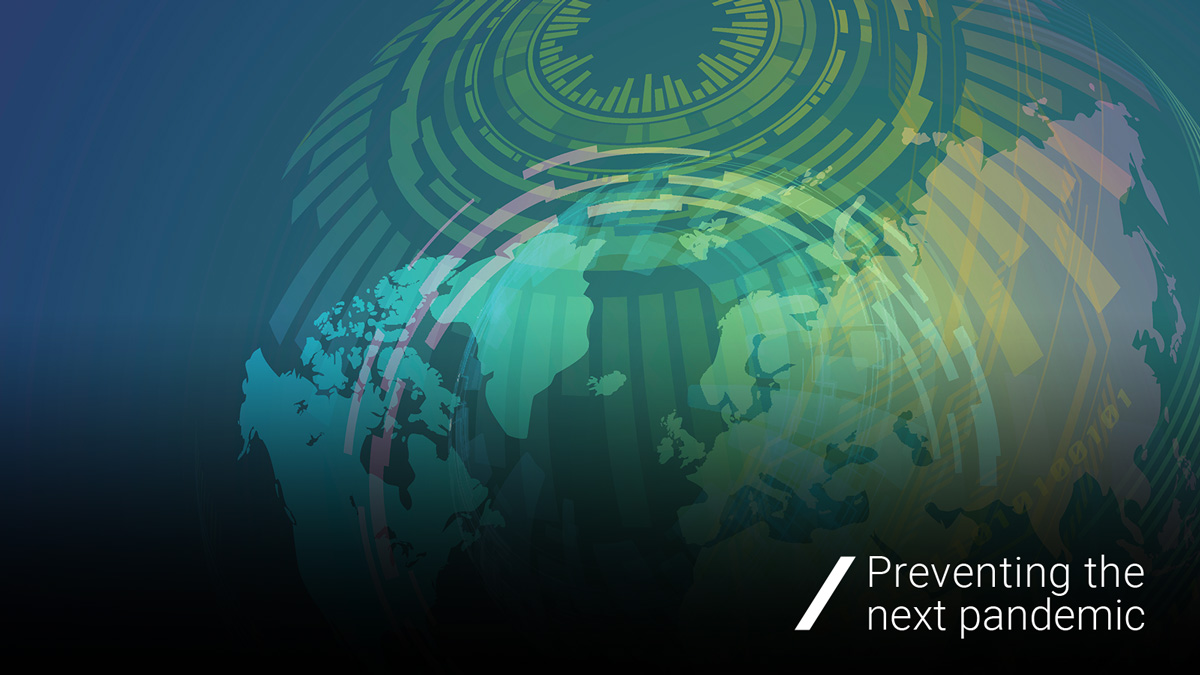Preventing the next pandemic: Infrastructure and global equity

In the final piece of a three-part series, Ben Hargreaves explores how manufacturing infrastructure was rapidly built up to the required capacity to ensure sufficient supply of COVID-19 vaccines, and what still remains to be done to improve vaccine equity globally.
During the early stages of the current pandemic, much of the focus was taken by the possibility of developing a successful vaccine and around the R&D efforts required to achieve this. A crucial element of delivering any vaccine did not attain as much attention: the manufacturing and supply chain infrastructure required for the global population to receive a vaccine. The major problem the industry faced is that there is always a lag to the creation of supply capacity – any infrastructure that is planned takes time to come online and, in a race against time, that was far from ideal. This issue was further complicated by the leading development efforts being mRNA vaccines, with large-scale capacity not existing and therefore had to be scaled up extremely rapidly.
Having the capacity to manufacture the vaccines is only one part of an overall chain of manufacture and delivery that includes many other elements, such as the vials and syringes needed to deliver the vaccines, the requirements of the vaccines for cold chain, and even having the personnel trained to administer the finished product. This process is a challenge that pharma companies face on commercialising any product but this was no regular launch: the overall load added by vaccination programs meant that capacity for over 13 billion vaccines was required. The scale of the challenge meant the industry had to find an unprecedented solution, which emerged through the level of cooperation adopted between all stakeholders.
All angles
Vaccine development progressed rapidly through an injection of capital from governments worldwide, and the same was also seen in the creation of required levels of capacity. The US government’s ‘Operation Warp Speed’ provided billions to aid R&D into a selection of vaccine candidates but also provided funding to leading vaccine developers to expand capacity to produce the vaccines themselves. The same operation also made significant investments in companies providing ancillary COVID-19 vaccine supplies, such as the production of needles and syringes.
The industry also pooled its own resources by relying on outside capacity to an enormous degree. Though the use of outsourcing manufacturing services is now common across the industry, it is extremely unusual to see large pharma companies rely on the manufacturing capacity of fellow big pharma entities, as was seen during the pandemic. Companies such as Merck and Novartis provided manufacturing capacity to Pfizer and BioNTech for their vaccine, and Sanofi provided a similar service to Moderna. Pfizer has also detailed the unusual relationships it built with contract manufacturing organizations wherein the company reserved a large portion of capacity, based on the prediction rather than expectation that its vaccine would eventually be successful.
No unqualified success
If the scale up of manufacture can now be considered a resounding success, with production of vaccines now consistently higher than demand, the supply of vaccines could not be looked at in the same way. Initially, when the vaccines were first approved, countries effectively competed against one another for early supply to protect their populations. Now, as vaccinations rates have become established in higher-income countries, there is a surplus of vaccines that is leading to some countries destroying vaccines due to the expiration date being exceeded.
The situation is causing a particular problem when the supply of vaccines has been severely limited to lower-income countries. It was revealed by the People’s Vaccine Alliance and Oxfam that the European Union had thrown away 55 million doses of vaccine at the end of February 2022, which outweighs the 30 million doses donated to African countries, at the time. According to the organizations, only 11% of people on the continent had received their first two vaccines. In other reports, some countries, such as Nigeria, Rwanda, Kenya, and Indonesia, have had to destroy vaccines received from Europe and North American because they were delivered too close to their expiry dates to be used.
Industry response
The European Federation for Pharmaceutical Industries and Associations suggests that vaccine donations are levelling off “because receiving countries are increasingly requested to postpone or cancel vaccine deliveries.” The organisation also pointed out that production of vaccines is not the issue and that lower-income countries have experienced vaccine roll-out problems, low levels of vaccine acceptance and issues related to healthcare absorptive capacity.
One of the major problem facing low-income countries is having the healthcare infrastructure capable of storing, transporting, and then delivering the available vaccines. All of the approved vaccines require some degree of temperature control and the mRNA vaccines, in particular, require cold chain infrastructure. This had been previously recognised as a risk, which led to The World Bank launching an initiative to improve uptake of sustainable cooling solutions, including cold chain, in developing countries.
Reaching more people
However, some companies are working on vaccines that could be delivered without a refrigeration requirement, instead being produced in the form of a pill. Vaxart is a biotech currently working on vaccine candidates for COVID-19, norovirus, influenza, respiratory syncytial virus, and human papillomavirus. A spokesperson for the company outlined to pharmaphorum of the advantages of oral pill vaccines: “Not only don’t you need needles, you don’t need clinics, you don’t need cold chain refrigeration. With an oral vaccine, all you need is a pill and a glass of water.”
They continued, “That means that distribution can become faster and easier. It makes it more likely that you can more easily get your vaccines to places around the globe that don’t have extensive health infrastructures like the developed world does.”
Any vaccine developed with Vaxart’s technology would be stable at room-temperature and the spokesperson linked the lower rates of vaccination in the Southern Hemisphere due to the cold chain requirements and the difficulty in transporting the vaccines. The spokesperson also noted that the company’s research suggested an oral pill could even promote greater vaccine access within higher-income countries.
“Research Vaxart did in 2021 found that if a pill had been available, as many as 20 million more Americans were more likely to have been vaccinated. This had profound implications for vaccine inequity because our polling suggested as many as four million Black, three million more rural, two million more Hispanic, and one million more Asian Americans would have gotten vaccinated,” the spokesperson stated.
In a pandemic situation, the ability to reach a greater percentage of the global population can prove crucial – not least in preventing unnecessary hospitalisations and deaths. The benefits are also economic, with estimates predicting that if vaccine uptake in the current pandemic had been at the same level in low-income countries as in high-income countries then $38 billion would have been added to the former’s gross domestic product in 2021.
More importantly still, achieving vaccine equity in future pandemics could reduce the risk of the spread of variants and therefore the prolongation of any pandemic event. As has been seen during the current pandemic, the emergence of different variants has caused a number of spikes in cases. With a greater distribution of available vaccines to both a greater proportion of the population, such spikes could at least be reduced in severity, or, depending on the particular pandemic, eradicated entirely.
You can read the previous parts of the Preventing the next pandemic series here:













